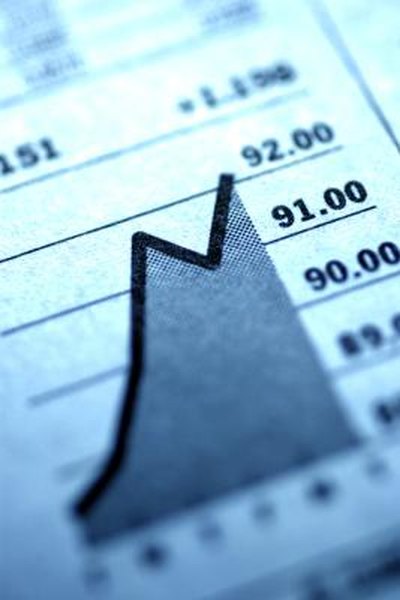Screening for Stocks With a High Alpha
Stocks that perform above expectations generate positive alpha.
Thinkstock Images/Stockbyte/Getty Images
One way to pick stocks is to screen for companies that have outperformed the market in the past. The concept of risk and reward is well-established in finance, with investors demanding higher returns for assuming higher levels of risk. When a stock beats its risk-adusted expectations, it generates positive alpha, a metric that may be useful in constructing an investment portfolio.
Capital Asset Pricing Model
One of the most widely used models in finance is the capital asset pricing model, first developed in the 1960s. The model formalizes the intuition that investors should be progressively rewarded for taking on more risk. The model's central equation is as follows: required return of an asset = risk-free rate + beta x (market return - risk-free rate). The risk-free rate represents the return that investors can obtain without risk of default, such as U.S. Treasury debt. The market return represents the expected return of a relevant benchmark, such as the S&P 500. Beta measures risk in terms of how volatile the asset is relative to its benchmark over a historical period.
Alpha And Beta
Stocks whose volatility is the same as their benchmarks have a beta equal to one. Riskier stocks -- those that fluctuate more than their benchmark -- have betas greater than one, while safer stocks have betas less than one. When a stock performs above expectations, as determined by its beta and benchmark, it generates positive alpha. Conversely, stocks that lag the market generate negative alpha. Picking an appropriate benchmark is critical to accurately determining a stock's alpha and beta.
Screening For Alpha
Suppose you're looking at two stocks: Company A and Company B. They both trade on the S&P 500, and their betas are 1.1 and 1.2, respectively. Further assume that the one-year Treasury note has a yield of 2 percent and that you expect the S&P 500 to grow by 10 percent annually. Now imagine that at the end of the year Company A's stock rises by 11 percent and Company B's by 11.5 percent. According to CAPM, the required rate of return for Company A is 10.8 percent (2 + 1.1*(10-2)) and 11.6 percent for Company B (2 + 1.2*(10-2)). If we calculate their alphas we discover that Company A outperformed the market with an alpha of 0.2 (11 - 10.8), while Company B underperformed with an alpha of -0.1 (11.5 - 11.6). An investor screening for high alpha would therefore pick Company A's stock over Company B's.
Past Vs. Future Performance
There's no guarantee that a stock's past performance will be repeated in the future. In other words, stocks with historically high alphas may turn out to be dogs. However, there's some evidence of the persistency of alpha in mutual funds. W. Van Harlow, director of research of Putnam Institute, found in a 2011 study that mutual funds with high alphas have a 60 percent chance of outperforming their peers.
References
Resources
Writer Bio
Giulio Rocca's background is in investment banking and management consulting, including advising Fortune 500 companies on mergers and acquisitions and corporate strategy. He also founded GradSchoolHeaven.com, an online resource for graduate school applicants. He holds a Bachelor of Science in economics from the University of Pennsylvania, a Master of Arts in English from the University of Hawaii at Manoa, and a Master of Business Administration from Harvard University.

